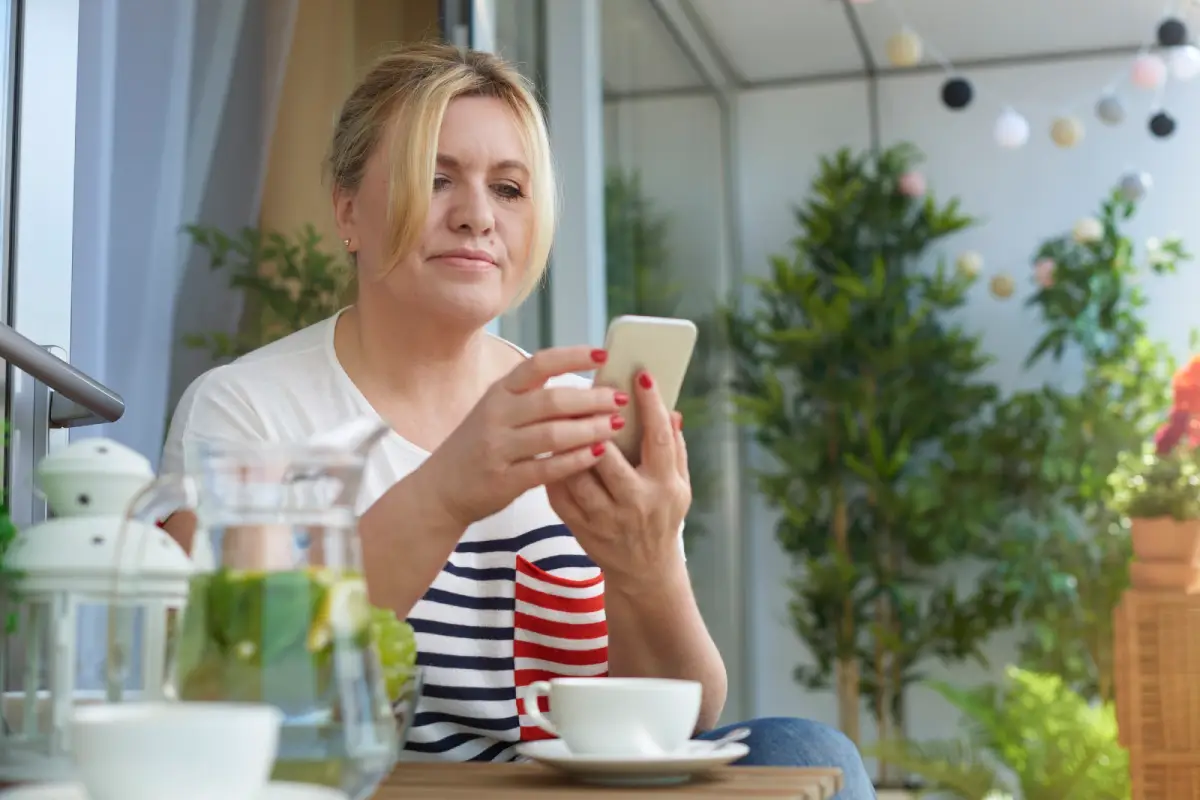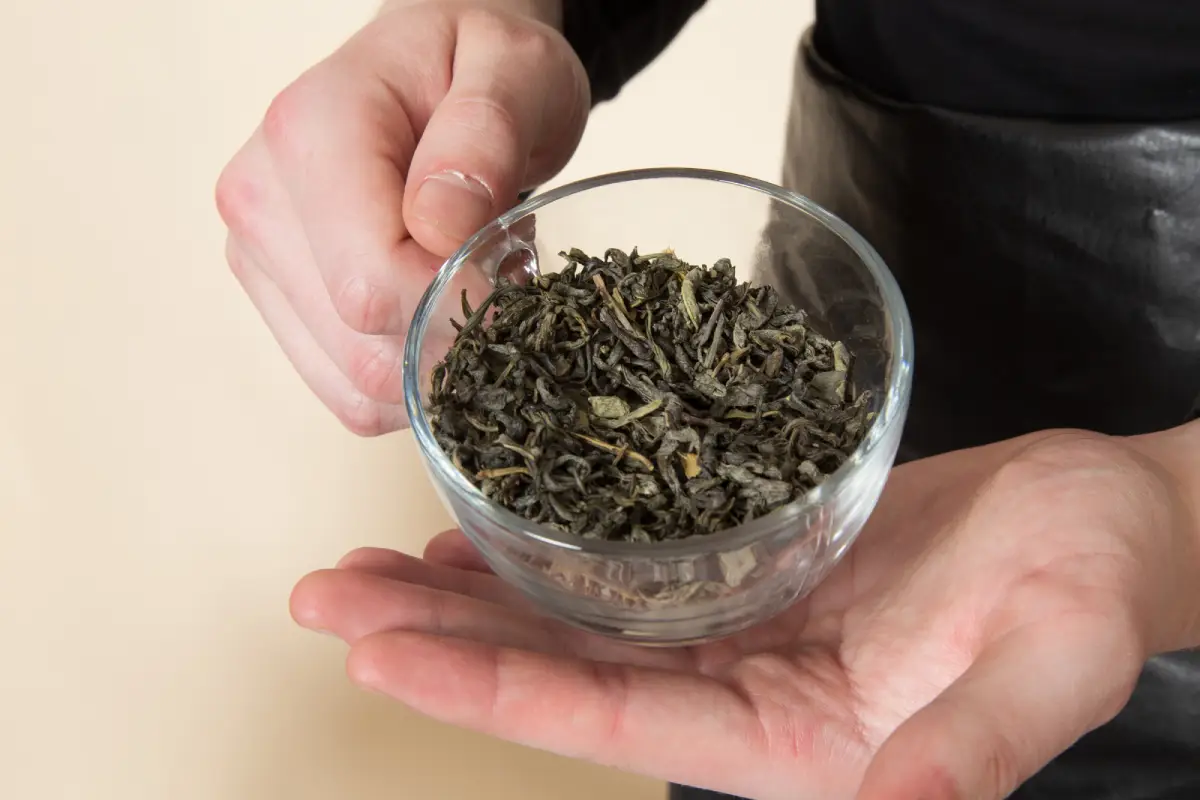Welcome to the world of Earl Grey tea. This unique blend, noted for its bergamot hint, has charmed many since the 19th century. Earl Grey is not just any tea. Its distinct flavor and comforting qualities set it apart. We now address a common question: Does Earl Grey tea have caffeine? As healthier alternatives to coffee gain popularity, it’s important to know about Earl Grey’s caffeine content. Whether it’s a morning start, an afternoon boost, or an evening unwind, caffeine matters. We will explore Earl Grey’s caffeine levels, compare them to other beverages, and discuss their effects on health and sleep. Our goal is to enhance your Earl Grey experience, whether you’re a seasoned drinker or a newcomer. For a detailed analysis of how Earl Grey tea’s caffeine compares to other beverages, consider reading this comprehensive guide on comparing the caffeine content of tea and coffee.
What is Earl Grey Tea?
Earl Grey tea is a distinct blend, flavored with bergamot orange oil. Named after Charles Grey, the 2nd Earl Grey, this tea has gained worldwide recognition. It stands out from plain black teas due to its unique, citrusy flavor that complements the black tea’s depth. This blend offers a refreshing, aromatic, and slightly floral taste, suitable for both hot and cold preparations.
Variations of Earl Grey depend on the black tea used and the bergamot oil amount. There are traditional blends and those with extra flavors or different tea bases like green or oolong tea. Earl Grey is not only popular for its taste but also for its potential health benefits, including antioxidants from black tea and bergamot. Yet, its caffeine content raises questions for many, prompting a closer look at how it affects consumers.
Does Earl Grey Tea Have Caffeine?
Yes, Earl Grey tea does contain caffeine. The amount of caffeine in Earl Grey comes from its black tea base, which naturally contains caffeine. The level of caffeine can vary depending on several factors, including the type of black tea used, the amount of tea used, and the brewing time.
On average, a cup of Earl Grey tea might contain anywhere from 30 to 60 milligrams of caffeine. This is less than a typical cup of coffee, which can contain 95 milligrams of caffeine or more, but more than what is found in most green teas. The specific caffeine content can vary from one brand to another and how the tea is prepared.
Caffeine in tea, including Earl Grey, affects individuals differently. Some may find it provides a gentle uplift in energy without the jitters associated with coffee. Others may be more sensitive to caffeine’s effects. Understanding your tolerance to caffeine is important when incorporating Earl Grey or any caffeinated tea into your daily routine.
The presence of caffeine is one of the reasons Earl Grey is a popular morning or afternoon choice. It offers a moderate caffeine boost that can help with alertness and concentration. However, for those sensitive to caffeine or who enjoy tea later in the day, it’s worth considering the caffeine content to avoid any impact on sleep.
Earl Grey Tea Caffeine Content Compared to Other Beverages
When comparing the caffeine content of Earl Grey tea to other beverages, it’s evident that Earl Grey sits comfortably in the middle of the caffeine spectrum. Here’s a brief overview to give you a better understanding:
- Coffee: A typical 8-ounce (240-milliliter) cup of coffee contains about 95 milligrams of caffeine, making it one of the highest caffeine-containing beverages. Earl Grey tea generally has significantly less caffeine, making it a milder option for those looking to reduce their caffeine intake.
- Black Tea: Since Earl Grey is a type of black tea, its caffeine content is similar to other black teas, ranging from 30 to 60 milligrams per cup. The bergamot oil added to Earl Grey does not affect its caffeine content.
- Green Tea: Green tea contains less caffeine than black tea, with an average of 20 to 45 milligrams per cup. If you’re seeking a lower-caffeine option, green tea might be preferable to Earl Grey.
- Herbal Teas: Most herbal teas are naturally caffeine-free, making them an ideal choice for those completely avoiding caffeine. Unlike Earl Grey, these teas can be consumed at any time without affecting sleep or causing jitters.
- Cola and Energy Drinks: Soft drinks and energy drinks vary widely in caffeine content but can range from 20 to 80 milligrams per serving. While some may have less caffeine than a cup of Earl Grey, others may contain more, along with added sugars and other stimulants.
Understanding these comparisons can help you make informed decisions about your beverage choices throughout the day, especially if you are monitoring your caffeine intake for health reasons or personal preference. Earl Grey tea offers a moderate level of caffeine, making it a versatile option that provides a lighter caffeine boost than coffee but with more than most green or herbal teas. To gain more insight into the impact of caffeine on heart health, the American Heart Association provides valuable information.
Health Benefits and Caffeine Considerations
Earl Grey tea, with its unique blend of black tea and bergamot oil, offers several health benefits. These range from antioxidant properties to potential heart health improvements. However, its caffeine content warrants consideration, especially for those sensitive to caffeine or watching their intake for health reasons.
Antioxidant Properties
Black tea, the base of Earl Grey, is rich in antioxidants like flavonoids, which can help fight free radicals and reduce inflammation. The bergamot in Earl Grey also adds its own set of antioxidants, contributing to the tea’s health benefits.
Heart Health
Studies suggest that regular consumption of black tea may lower the risk of heart disease. The flavonoids can improve endothelial function, leading to healthier blood vessels.
Digestion and Stress Relief
The bergamot in Earl Grey is known for its calming effects and can aid digestion. Drinking Earl Grey may help relieve stress, reduce anxiety, and promote a sense of well-being.
Caffeine Considerations
While the benefits of Earl Grey tea are compelling, it’s important to consider its caffeine content. Those sensitive to caffeine may experience restlessness, insomnia, or increased heart rate. Pregnant women and individuals with certain health conditions should also monitor their caffeine intake closely.
- Sleep: Consuming caffeine late in the day can disrupt sleep patterns. If you find that caffeine impacts your sleep, consider enjoying Earl Grey in the morning or early afternoon. For further information on how caffeine affects sleep, the Sleep Foundation offers a detailed exploration.
- Anxiety and Sensitivity: Individuals with caffeine sensitivity or anxiety disorders may find that even moderate amounts of caffeine exacerbate their symptoms.
- Pregnancy: Pregnant women are often advised to limit caffeine intake. If you’re pregnant, consult with a healthcare provider about safe levels of caffeine consumption.
In summary, Earl Grey tea offers several health benefits, but it’s wise to consume it in moderation, considering your caffeine tolerance and how it fits into your overall dietary pattern. Balancing Earl Grey’s delightful flavor and potential health perks with mindfulness about caffeine will help you enjoy this classic tea while caring for your wellbeing.
Is Earl Grey Tea Good for Sleep?
The relationship between Earl Grey tea and sleep revolves primarily around its caffeine content. While Earl Grey provides a lower caffeine option compared to coffee, it still contains enough caffeine that could potentially affect sleep, especially for those sensitive to caffeine or when consumed late in the day.
Understanding Caffeine’s Impact on Sleep
Caffeine stimulates the nervous system, which can prevent your body from naturally relaxing at night. This is because caffeine blocks the effects of adenosine, a neurotransmitter thought to promote sleep. For individuals sensitive to caffeine, drinking Earl Grey tea in the evening might lead to difficulty falling asleep or disrupted sleep patterns.
Earl Grey as a Pre-Sleep Beverage
For those who are not particularly sensitive to caffeine, an early evening cup of Earl Grey might not disrupt sleep and could serve as a comforting pre-sleep ritual. The key is to understand your personal caffeine threshold and how it affects your sleep.
Tips for Enjoying Earl Grey Tea and Good Sleep
- Timing is Key: Enjoying Earl Grey tea in the morning or early afternoon can help minimize its impact on sleep. Try to avoid consuming caffeine at least six hours before bedtime.
- Consider Decaffeinated Options: If you love the flavor of Earl Grey but are sensitive to caffeine, decaffeinated Earl Grey teas are available and can be a good evening option.
- Listen to Your Body: Everyone’s sensitivity to caffeine differs. Pay attention to how Earl Grey tea affects your sleep and adjust your consumption accordingly.
In conclusion, while Earl Grey tea can be an energizing and uplifting beverage for many, its suitability as a pre-sleep drink depends on individual caffeine sensitivity and the timing of consumption. By being mindful of these factors, you can enjoy Earl Grey tea’s delightful flavor and potential health benefits without compromising a good night’s sleep.
Choosing the Right Earl Grey Based on Caffeine Content
Selecting the right Earl Grey tea to fit your caffeine needs allows you to enjoy this classic beverage any time of the day, without worrying about its impact on your energy levels or sleep. Here’s how to navigate your choices:
1. Standard Earl Grey Tea
- Caffeine Level: Moderate, typically between 30 to 60 milligrams per cup.
- Best For: Morning or early afternoon enjoyment when you need a mild to moderate caffeine boost.
2. Decaffeinated Earl Grey Tea
- Caffeine Level: Minimal, usually less than 5 milligrams per cup.
- Best For: Late afternoon or evening sips when you want the flavor of Earl Grey without the caffeine kick. Also suitable for those sensitive to caffeine at any time of the day.
3. Earl Grey Green Tea
- Caffeine Level: Lower than traditional Earl Grey, about 20 to 45 milligrams per cup.
- Best For: Those looking for the health benefits and flavor of Earl Grey but with less caffeine. Suitable for late morning or early afternoon.
4. Earl Grey with Additional Herbs
- Caffeine Level: Varies depending on the herbs used. Some herbs can have calming effects, which might balance the caffeine’s stimulant nature.
- Best For: Anytime, depending on the specific blend and your caffeine tolerance.
Tips for Choosing and Enjoying Earl Grey
- Check the Label: Brands often provide caffeine content information. Look for this when selecting your tea.
- Brewing Time: Shorter brewing times can reduce caffeine extraction. Experiment to find the right balance between flavor and caffeine content for you.
- Personal Tolerance: Consider your own caffeine sensitivity and how different levels affect you throughout the day.
- Mix and Match: You might prefer a stronger caffeinated Earl Grey in the morning and a decaffeinated or lower-caffeine version in the evening.
By understanding the various options available and considering your own caffeine preferences and sensitivities, you can tailor your Earl Grey tea consumption to fit your lifestyle perfectly. Whether you’re looking for a morning pick-me-up, a gentle afternoon refreshment, or a soothing evening ritual, there’s an Earl Grey blend that’s just right for you.
Brewing the Perfect Cup of Earl Grey
Brewing Earl Grey tea is an art that combines tradition with personal preference. The perfect cup can enhance its flavor profile and even adjust its caffeine content. Here are steps and tips to brew Earl Grey tea to your liking:
Steps to Brew Earl Grey Tea
- Water Quality: Start with fresh, cold water. If your tap water is hard or has a strong taste, consider using filtered or bottled water for a cleaner flavor.
- Heating the Water: Bring water to a boil. For black tea bases, 208 to 212 degrees Fahrenheit (98 to 100 degrees Celsius) is ideal. If you’re brewing a green Earl Grey, aim for slightly cooler water, around 175 to 185 degrees Fahrenheit (80 to 85 degrees Celsius).
- Measuring the Tea: Use about one teaspoon of loose leaf tea per 8-ounce (about 240 milliliters) cup. Adjust to taste; more tea will result in a stronger brew.
- Steeping Time: Steep the tea for 3 to 5 minutes. Shorter steeping times yield a lighter flavor and less caffeine, while longer steeping enhances both flavor and caffeine content.
- Customization: Consider adding milk, lemon, or honey to complement Earl Grey’s citrus notes, but taste it plain first to appreciate its natural flavor.
Tips for a Perfect Brew
- Experiment with Brewing Times: Adjusting steeping time lets you control both the strength and the caffeine content of your tea.
- Loose Leaf vs. Tea Bags: Loose leaf teas often provide a richer flavor than tea bags and can be more economical and environmentally friendly.
- Water Temperature Matters: Especially for Earl Grey variations with green or white tea bases, using water that’s too hot can make the tea bitter.
- Personalize Your Tea: The beauty of Earl Grey is its versatility. Feel free to experiment with additions or brewing methods to find your perfect cup.
Brewing Earl Grey tea is a simple yet rewarding process. By following these steps and adjusting based on your preferences, you can enjoy a delightful cup that fits your mood, taste, and desired caffeine level at any time of day.
FAQs About Earl Grey Tea
Is Earl Grey Tea High in Caffeine?
No, it’s moderate. Earl Grey has 30 to 60 milligrams of caffeine per cup, less than coffee.
Is Earl Grey Tea Good for Sleep?
It depends on your caffeine sensitivity. If sensitive, avoid Earl Grey in the evening. Decaf options are available.
What Tea is Highest in Caffeine?
Black teas like Earl Grey are high, but Yerba Mate tops the list, with caffeine levels similar to coffee.
How Much Caffeine is in Twinings Earl Grey Tea Compared to Coffee?
Twinings Earl Grey has about 40 milligrams of caffeine per cup, less than half of what’s in coffee.
Conclusion
Earl Grey tea, with its unique flavor and moderate caffeine, is a delightful choice for many occasions. It offers a gentler lift than coffee. Knowing how to choose, brew, and enjoy it allows you to appreciate Earl Grey fully. Whether for a morning boost, afternoon refreshment, or evening relaxation, Earl Grey can fit into your day perfectly. Its robust flavor and bergamot aroma make it a favorite for tea lovers everywhere.







